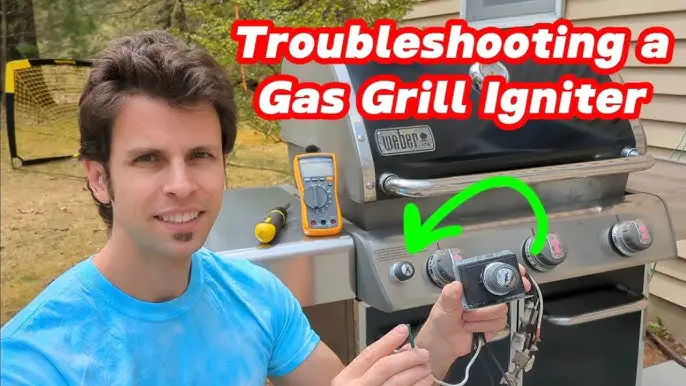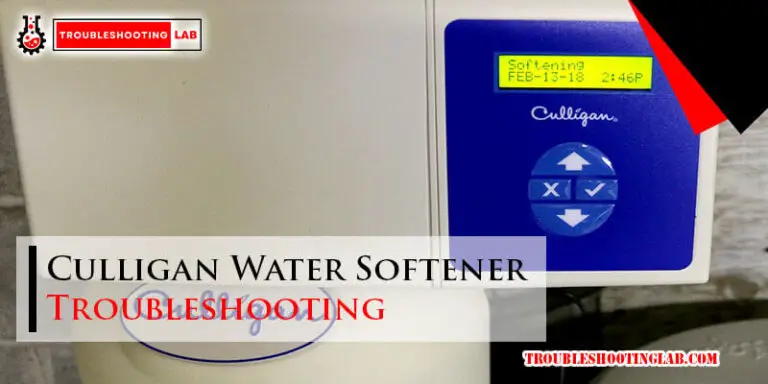Holley Carburetor Troubleshooting: Expert Tips and Solutions
Holley carburetors are popular in the automotive world for their performance. But like any part, they can have issues.
Knowing how to troubleshoot these problems is key. A Holley carburetor is vital for your engine’s performance. It controls the air-fuel mixture. When it malfunctions, your vehicle can suffer. From rough idling to poor acceleration, a faulty carburetor can cause many headaches.
Understanding the common problems and their fixes can save time and money. This guide will help you identify and solve issues with your Holley carburetor. Whether it’s a minor tweak or a major fix, we’ll cover the basics to get your engine running smoothly again. Dive in to keep your ride performing at its best.

Credit: www.holley.com
Common Issues
Holley carburetors are known for their performance and reliability. But like any other mechanical component, they can have issues. Knowing common problems can help maintain optimal performance. This section will discuss some frequent Holley carburetor issues.
Engine Stalling
Engine stalling can be frustrating. One common cause is a vacuum leak. Check for loose or damaged hoses. Another cause is incorrect fuel pressure. Verify that the fuel pressure is within the recommended range. A dirty carburetor can also cause stalling. Clean the carburetor thoroughly to ensure smooth operation.
Rough Idling
Rough idling can indicate several issues. First, inspect the idle mixture screws. They should be adjusted correctly. If the screws are too tight or too loose, it can cause rough idling. Another potential issue is clogged fuel passages. Clean the passages to ensure proper fuel flow. A faulty float level can also result in rough idling. Adjust the float level according to the manufacturer’s specifications.

Credit: m.youtube.com
Diagnosing Symptoms
Identifying issues with your Holley carburetor starts with recognizing symptoms. Knowing what to look for can save time and effort. Two common signs are black smoke and fuel leaks. Let’s explore these symptoms to help you troubleshoot effectively.
Black Smoke
Black smoke from the exhaust indicates a rich fuel mixture. This means your carburetor is delivering more fuel than necessary. Excess fuel can cause several issues, including poor fuel economy and engine performance.
Steps to diagnose black smoke:
- Check the air filter. A dirty filter restricts airflow.
- Inspect the choke. It might be stuck in the closed position.
- Examine the fuel pressure. High pressure can overwhelm the carburetor.
- Look at the float level. Incorrect settings can lead to excess fuel.
Adjustments and cleaning can often resolve these issues. Ensure each component functions properly.
Fuel Leaks
Fuel leaks are dangerous and need immediate attention. Leaks can lead to fire hazards and engine damage. Identifying the source is crucial for a safe repair.
Common sources of fuel leaks:
- Loose or damaged fuel lines
- Worn gaskets and seals
- Cracked fuel bowls
- Faulty needle and seat
Steps to fix fuel leaks:
- Inspect all fuel lines for cracks or loose fittings.
- Replace any worn gaskets and seals.
- Check the fuel bowls for cracks. Replace if necessary.
- Ensure the needle and seat are sealing correctly.
Regular maintenance helps prevent these issues. Always use quality parts for repairs.
Adjusting Air-fuel Mixture
Ensuring the right air-fuel mixture is key for a smooth-running engine. A proper mix means better performance and fuel efficiency. Incorrect adjustments can lead to poor engine performance. To help, we will focus on two main areas: idle mixture screws and main jets.
Idle Mixture Screws
The idle mixture screws control the air-fuel mix at idle. First, locate the screws on your Holley carburetor. Usually, they are at the base of the carburetor. Turn the screws slowly to adjust the mixture. Start by turning them clockwise until they lightly seat. Then, turn them counterclockwise one and a half turns.
Start the engine and let it warm up. Listen to the engine’s idle. Turn the screws slowly, one at a time. Adjust until the engine runs smoothly. If the engine stumbles, turn the screw the other way. Repeat this for both screws. Balance is key. Both screws should be adjusted equally.
Main Jets
Main jets control the air-fuel mix during higher speeds. They are inside the fuel bowls. To access them, remove the fuel bowl screws. Look for the jets at the bottom. Use a flat-head screwdriver to remove the jets.
Check the jet size. If the engine runs lean, use a larger jet. If it runs rich, use a smaller jet. Replace the jets and reassemble the fuel bowl. Restart the engine and test at higher speeds. Note the changes in performance. Adjust as needed.
Cleaning The Carburetor
Cleaning the carburetor is a crucial part of maintaining your Holley carburetor. Dirt and grime can build up over time, causing performance issues. A clean carburetor ensures your engine runs smoothly and efficiently. Follow these steps to effectively clean your Holley carburetor.
Disassembly Tips
Before cleaning, you need to disassemble the carburetor. Here are some tips:
- Label parts as you remove them. This makes reassembly easier.
- Take pictures at each step. Visual aids can help during reassembly.
- Use a clean, well-lit workspace. A clutter-free area helps prevent losing small parts.
- Keep screws and bolts in small containers. This avoids mixing them up.
Cleaning Solutions
Choose the right cleaning solution for your carburetor. Here are some options:
| Solution | Best For |
|---|---|
| Carburetor Cleaner Spray | Quick cleans, accessible areas |
| Ultrasonic Cleaner | Deep cleaning, hard-to-reach areas |
| Soaking in Solvent | Heavy build-up, overnight cleaning |
Always wear gloves and eye protection. These solutions can be harmful.
Use a soft brush to scrub away grime. Avoid using metal brushes as they can damage parts. Rinse with water and dry thoroughly before reassembling.
Replacing Worn Parts
A well-maintained Holley carburetor is key to your engine’s performance. Over time, parts can wear out. Replacing these worn parts can solve many issues. This includes gaskets, the needle and seat, and other critical components.
Gaskets
Gaskets are essential for sealing joints in your carburetor. A damaged gasket can cause leaks. It can also lead to poor engine performance. Inspect your gaskets regularly. Look for cracks or wear.
To replace a gasket, follow these steps:
- Remove the old gasket carefully.
- Clean the surfaces where the gasket sits.
- Install the new gasket in the correct position.
- Tighten the bolts evenly to avoid warping.
Always use the correct gasket for your specific Holley carburetor model. This ensures a proper fit and seal.
Needle And Seat
The needle and seat control fuel flow into the carburetor. A worn needle and seat can cause flooding or fuel starvation. Inspect these parts regularly.
To replace the needle and seat, follow these steps:
- Remove the fuel bowl from the carburetor.
- Unscrew the old needle and seat.
- Install the new needle and seat.
- Reattach the fuel bowl to the carburetor.
Ensure the needle and seat are properly adjusted after installation. This ensures smooth fuel flow and optimal performance.
| Part | Common Issue | Solution |
|---|---|---|
| Gasket | Cracked or worn | Replace with a new gasket |
| Needle and Seat | Worn or damaged | Replace with a new set |
Replacing worn parts like gaskets and the needle and seat can greatly improve carburetor performance. Regular maintenance is key to avoiding bigger issues.

Credit: 7173mustangs.com
Checking Fuel Pressure
Experiencing issues with your Holley carburetor? One crucial step in troubleshooting is checking fuel pressure. Proper fuel pressure is essential for efficient carburetor performance. Below are key areas to focus on.
Pressure Gauge Use
To start, you’ll need a fuel pressure gauge. This tool measures the pressure in the fuel lines.
Follow these steps:
- Attach the gauge to the fuel line.
- Turn on the engine to take a reading.
- Observe the gauge carefully.
A steady reading indicates a healthy fuel system. Fluctuating readings may signal problems.
Optimal Pressure Range
Knowing the optimal pressure range for your Holley carburetor is essential. Typically, Holley carburetors operate best within a specific range.
Refer to the table below for the general pressure range:
| Carburetor Model | Optimal Pressure (PSI) |
|---|---|
| Holley 4150 | 5-7 PSI |
| Holley 4160 | 5-7 PSI |
| Holley 4500 | 7-8 PSI |
Ensure your fuel pressure is within these ranges. If it’s too low or too high, adjustments are needed.
Use these tips to maintain optimal fuel pressure. This ensures your Holley carburetor runs smoothly.
Tuning For Performance
Tuning a Holley carburetor is a crucial step for achieving optimal performance. Understanding how to make precise adjustments can significantly enhance your engine’s efficiency. This section will guide you through essential tuning aspects such as the accelerator pump adjustment and secondary throttle plates.
Accelerator Pump Adjustment
The accelerator pump is vital for smooth acceleration. It ensures the engine receives the right amount of fuel when you press the gas pedal. Adjusting it correctly is essential for avoiding hesitations and ensuring a smooth ride.
To adjust the accelerator pump:
- Locate the pump linkage on the side of the carburetor.
- Check for free play in the linkage. There should be none.
- Use a wrench to adjust the screw until the free play is eliminated.
Make sure to test drive the vehicle after making adjustments. This helps in ensuring the engine responds well during acceleration. If the engine hesitates, readjust the pump linkage.
Secondary Throttle Plates
The secondary throttle plates control the air-fuel mixture entering the engine. Proper adjustment of these plates is essential for maintaining optimal performance at higher speeds.
Follow these steps to adjust the secondary throttle plates:
- Locate the secondary throttle adjustment screw.
- Turn the screw clockwise to open the plates slightly.
- Observe the engine’s response and adjust accordingly.
A well-adjusted secondary throttle plate ensures better airflow and fuel mixture. This leads to improved performance and fuel efficiency.
Remember, small adjustments can have significant impacts. Always adjust incrementally and test the vehicle to find the perfect balance.
Preventive Maintenance
Keeping your Holley carburetor in top shape requires preventive maintenance. Regular inspections and proper storage can help avoid many common issues. Routine care ensures your carburetor runs smoothly and lasts longer.
Regular Inspections
Regular inspections are key to maintaining your carburetor. Check for any loose or damaged parts. Look for signs of wear or corrosion. Ensure all connections are tight. Inspect the fuel lines for cracks or leaks. A clean carburetor performs better, so clean it regularly. Remove any dirt or debris that might have accumulated. This simple step can prevent many problems.
Seasonal Storage Tips
Proper storage is crucial when the carburetor is not in use. Before storing, drain all fuel from the carburetor. This prevents fuel from gumming up the parts. Use a fuel stabilizer if the engine will sit for a long time. Store the carburetor in a dry place. Moisture can cause rust and damage the parts. Cover it to keep dust and debris away. Following these tips ensures your carburetor stays in good condition.
Frequently Asked Questions
Why Is My Holley Carburetor Leaking Fuel?
A stuck float or a damaged gasket can cause fuel leaks.
How Do I Adjust The Holley Carburetor Idle Mixture?
Turn the idle mixture screws to set the air-fuel ratio correctly.
What Causes Rough Idle In A Holley Carburetor?
Dirty jets or incorrect idle mixture can cause rough idling.
Why Does My Engine Stall With A Holley Carburetor?
Incorrect float level or vacuum leaks can cause stalling.
How To Clean A Holley Carburetor Properly?
Disassemble, use carb cleaner, and reassemble carefully for best results.
Conclusion
Properly maintaining your Holley carburetor ensures smooth engine performance. Troubleshooting common issues can save time and money. Regular checks and cleanings prevent bigger problems. Listen to your engine. Understand its signs. Small adjustments can make a huge difference. Keep your tools handy and follow guidelines.
Your engine will thank you. Happy driving!






